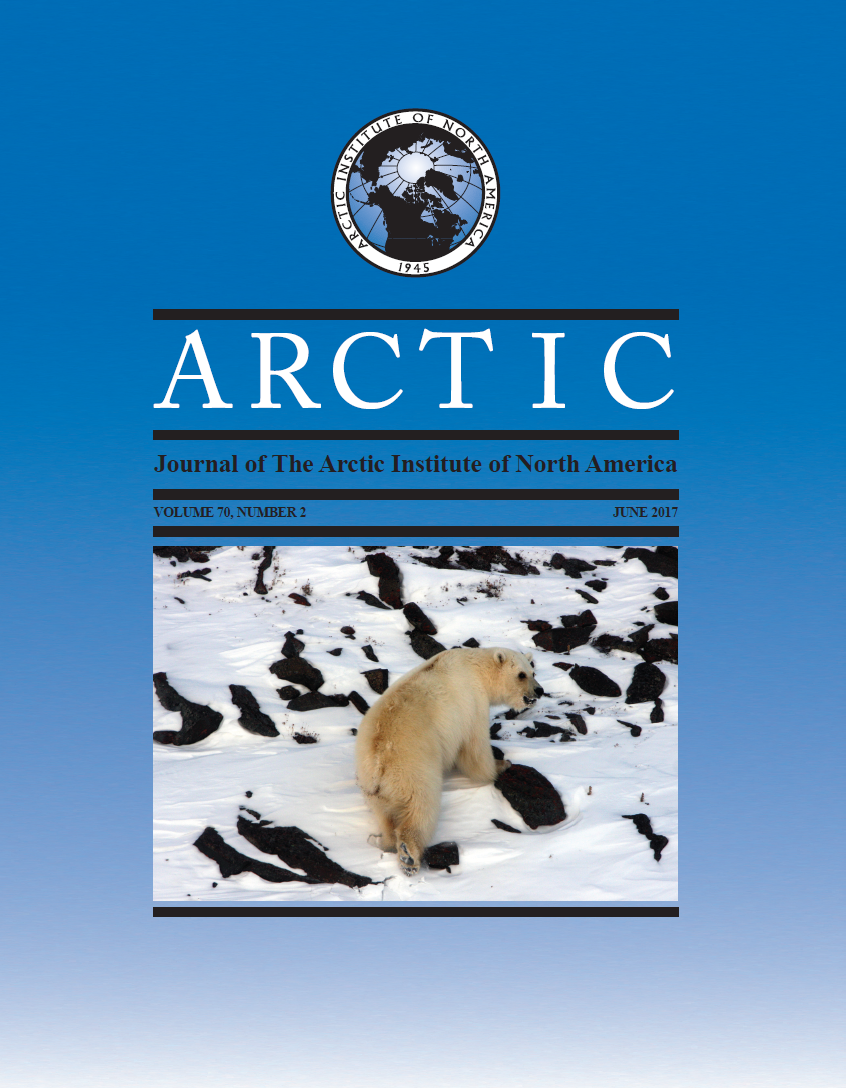Long-Distance Movement of a Female Polar Bear from Canada to Russia
DOI:
https://doi.org/10.14430/arctic4641Keywords:
polar bear, gene flow, home range, long-distance movement, Brownian bridge movement model, minimum convex polygon, climate change, Southern Beaufort Sea, Chukchi Sea, Ursus maritimusAbstract
Polar bears (Ursus maritimus) display fidelity to large geographic regions, and their movements are influenced by sea ice distribution. Polar bear subpopulations are moderately distinct from one another, and long-distance movements between subpopulations are rare. We describe and analyze the movements of a female polar bear tracked by satellite telemetry from spring 2009 for 798 days. This female traveled an exceptionally long distance (totaling 11 686 km) from the sea ice off the Yukon Territory, Canada (Southern Beaufort Sea subpopulation) to Wrangel Island, Russia (Chukchi Sea subpopulation). In comparison to other polar bears in this study, this bear traveled farther, moved faster, and had a much larger home range in the first year. Furthermore, the calculation of the home range size by two different methods demonstrated that the commonly used minimum convex polygon method overestimated the home range compared to the less biased Brownian bridge movement model. This female’s long-distance movement was unusual and provides additional evidence for gene flow between subpopulations. Monitoring polar bear movements is useful to track such events, which is especially important at present because sea ice loss due to climate change can affect subpopulation boundaries and influence management.


